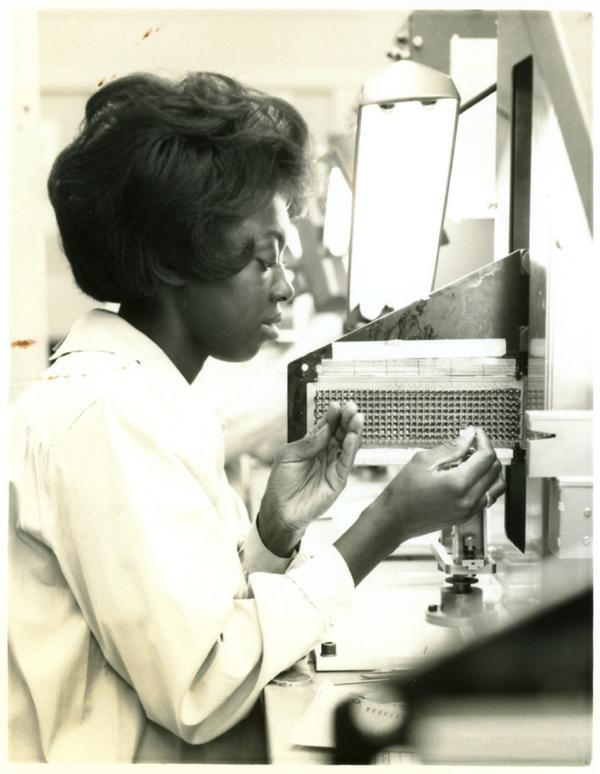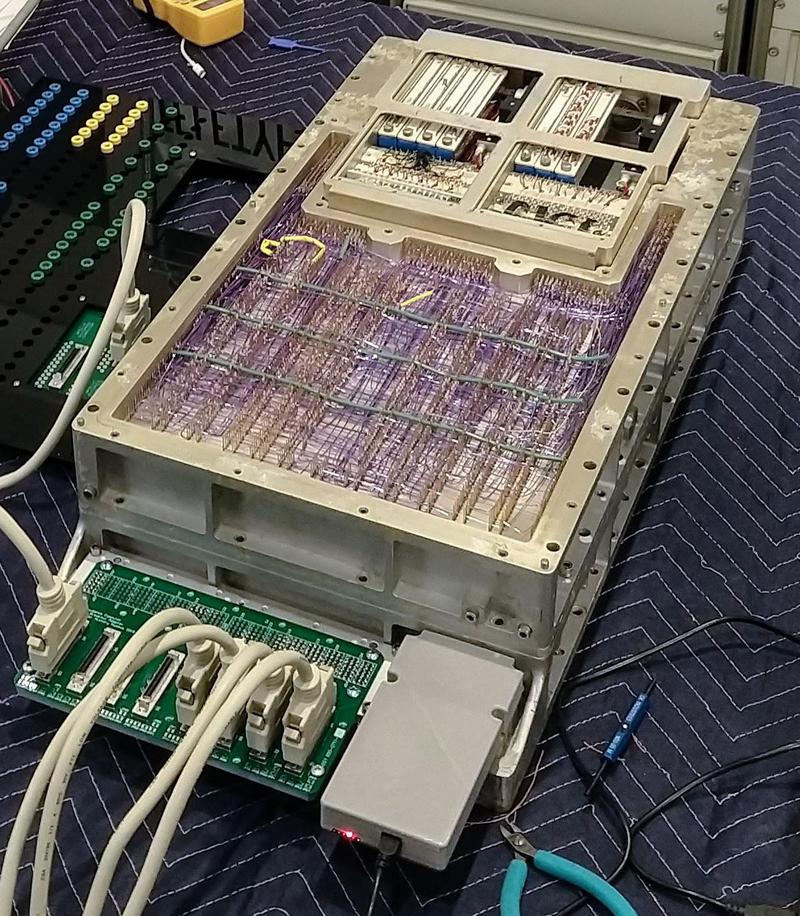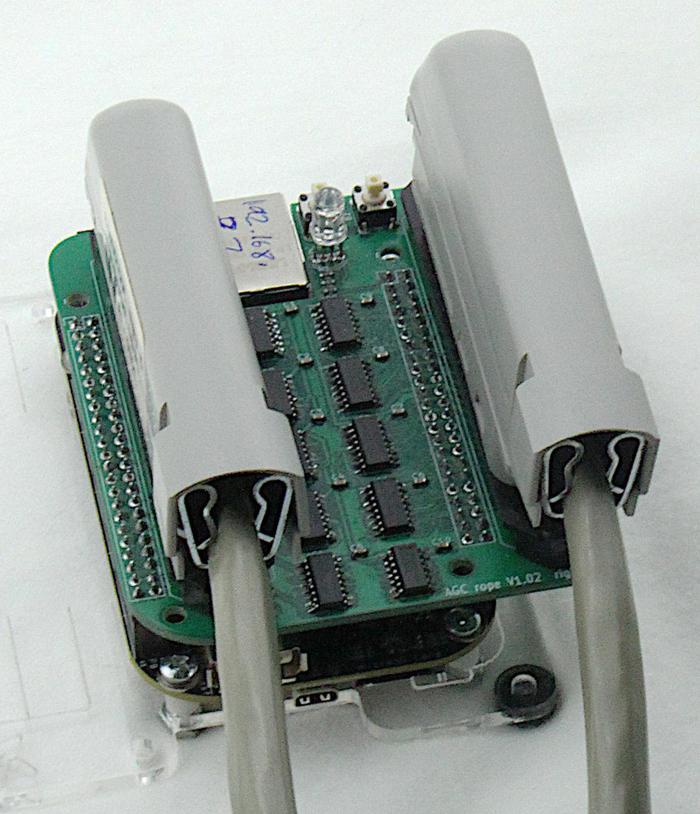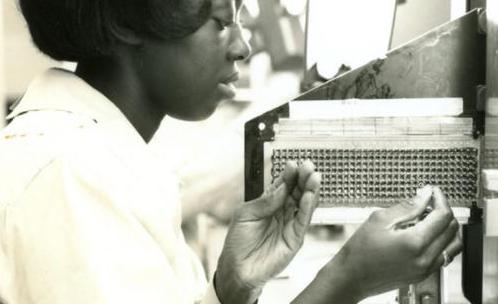Navigating to the moon and landing on its surface during the NASA Apollo missions 50 years ago took some fascinating engineering within the spacecraft. The Apollo Guidance Computer or AGC was key to guiding the craft and to the success of the mission.
Ken Shirriff and friends Mike Stewart, Marc Verdiell, and Carl Claunch have been restoring an AGC that was used for ground testing of the NASA Apollo Lunar Module.

“The standard AGC held six core rope modules, each storing just 6 kilowords of program information (about 12 kilobytes). Core rope modules were a bit like a video game ROM cartridge, holding software in a permanent yet removable format. Manufacturing a core rope was a tedious process that took about 8 weeks and cost $15,000 per module. Skilled women wove the rope by hand, threading a hollow wire-filled needle back and forth through the cores.”
To save costs during development and ground testing, in place of the core ropes, NASA used rope simulators. While the AGC itself has extensive documentation, the core rope simulator was undocumented, so Ken and his friends’ reverse-engineering skills were put to the test.

This inspiring project of bringing important space exploration technology to life is well documented in Ken’s blog. Playing the role of the mainframe computer of the day, the BeagleBone® Black provides the programming interface to the rope simulator.
“Once I had reverse-engineered the core rope simulator, the next step was to build an interface that could provide program data to the simulator. I used a BeagleBone®, a tiny single-board Linux system. The advantage of the BeagleBone® is that it includes fast microcontrollers that could respond to the AGC’s memory requests quickly, in real time.”

“I wrote some software that runs on the PRU, the BeagleBone’s microcontroller. This software is basically a state machine that waits for an address from the simulator box, waits for the timing signal, reads the word from BeagleBone RAM, and sends the word to the simulator box. The software is on Github.”
Ken and the team were able to demonstrate and show off this restored first “digital autopilot” at two events in celebration of the 50th Anniversary of the Apollo 11 Mission to the Moon :
The Cradle of Aviation Museum & Education Center and MIT Museum Lunar Day

